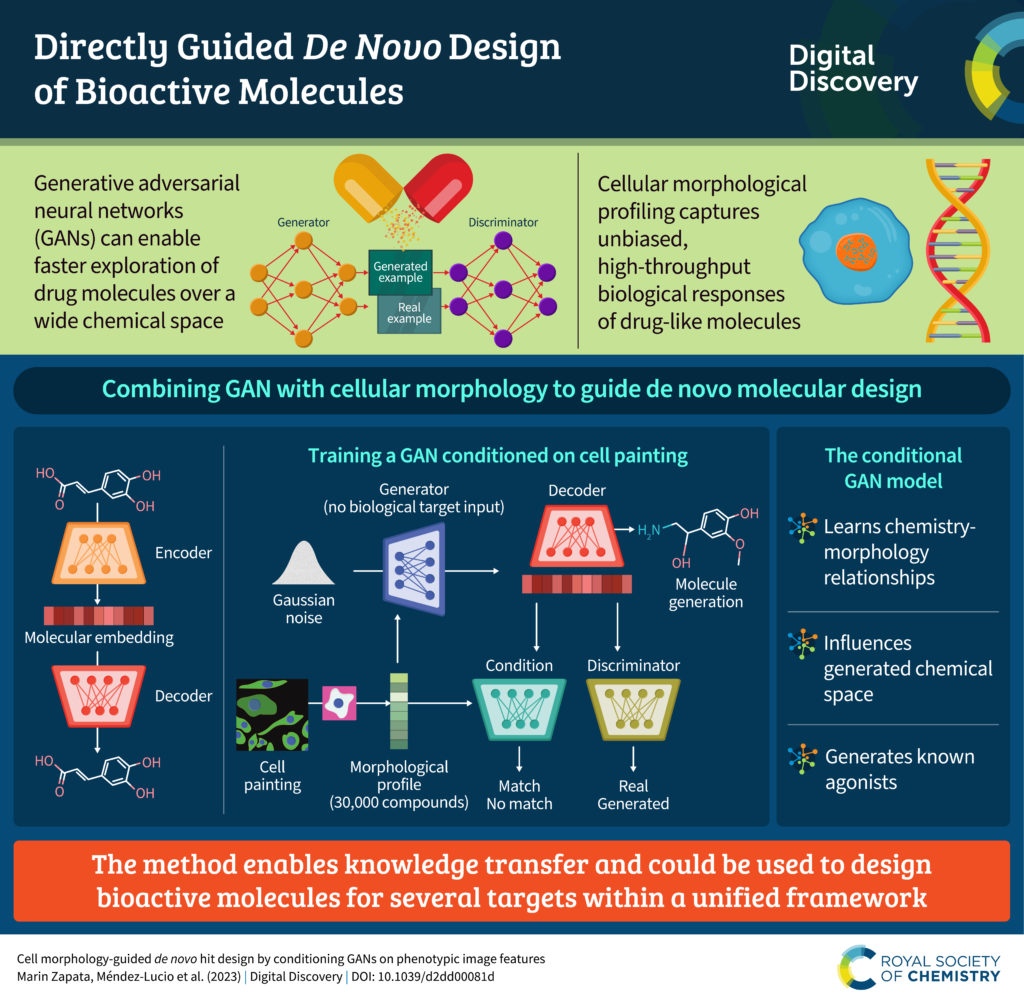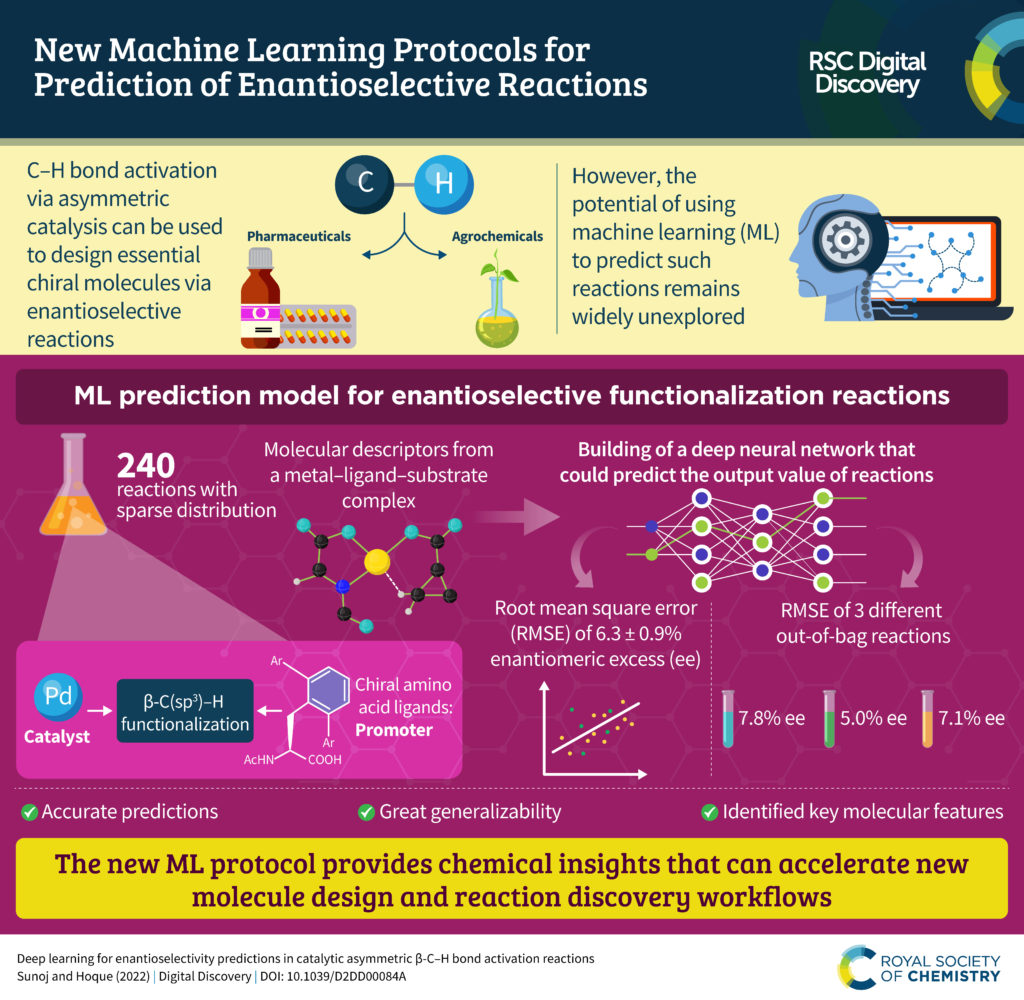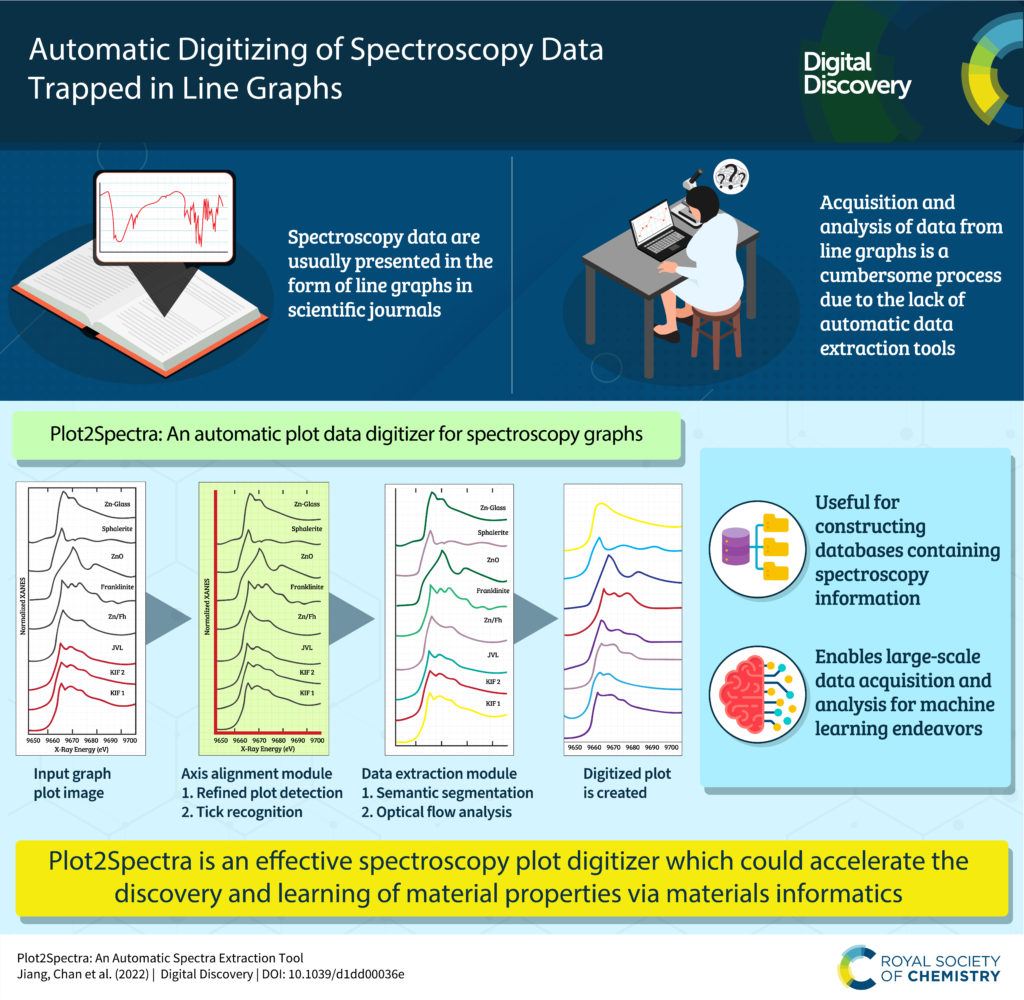Link-INVENT, an extension to REINVENT for the design of PROTACs, fragment linking, and scaffold hopping, is the subject of our new infographic:

Read the full open access article:
Link-INVENT: generative linker design with reinforcement learning
Link-INVENT, an extension to REINVENT for the design of PROTACs, fragment linking, and scaffold hopping, is the subject of our new infographic:

Read the full open access article:
Link-INVENT: generative linker design with reinforcement learning
Our latest infographic highlights work from Choudhary et al. on a machine learning force field for solids covering 89 elements:

Find out more in the open access article:
Unified graph neural network force-field for the periodic table: solid state applications
Our next infographic presents work from Rieger et al., using explainability and uncertainty to efficiently predict battery degradation and end-of-life.

Find out more in their full open-access article:
We’re pleased to share this new infographic on work from Marin Zapata et al., showing that phenotypic features of cell images can guide a GAN to drug candidates:

Read the full open access article here:
Cell morphology-guided de novo hit design by conditioning GANs on phenotypic image features
Paula A. Marin Zapata, Oscar Méndez-Lucio, Tuan Le, Carsten Jörn Beese, Jörg Wichard, David Rouquié and Djork-Arné Clevert, Digital Discovery, 2023, 2, 91–102, DOI: 10.1039/D2DD00081D
The first infographic from Digital Discovery volume 2 highlights a paper from Gormley et al. on a fully automated system for synthesising new polymers. The automated lab includes independent control of each reaction in a well plate using a custom light box.

Read the full article, open access, here:
A fully automated platform for photoinitiated RAFT polymerization
Machine-learning prediction of enantioselectivity of C-H bond activation reactions is the focus of this infographic, on an exciting new paper by Hoque and Sunoj:

Find out more in the full article below!
Our newest research infographic shares research by Junkers et al., demonstrating the use of automation to reduce operator-to-operator inconsistencies in high-throughput RAFT screening while improving efficiency.

Read the full open access article here:
Digital Discovery, 2022, 1, 519–526, DOI: 10.1039/D2DD00035K
We are delighted to welcome Professor Cesar de la Fuente-Nunez from the University of Pennsylvania, USA, as a new Associate Editor for Digital Discovery.

Cesar de la Fuente is a Presidential Assistant Professor at the University of Pennsylvania, where he leads the Machine Biology Group whose goal is to combine the power of machines and biology to help prevent, detect, and treat infectious diseases. Specifically, he pioneered the development of the first antibiotic designed by a computer with efficacy in animals, designed algorithms for antibiotic discovery, reprogrammed venoms into antimicrobials, created novel resistance-proof antimicrobial materials, and invented rapid low-cost diagnostics for COVID-19 and other infections.
De la Fuente is an NIH MIRA investigator and has received recognition and research funding from numerous other groups. Prof. de la Fuente has received over 50 awards. He was recognized by MIT Technology Review as one of the world’s top innovators for “digitizing evolution to make better antibiotics”. He was selected as the inaugural recipient of the Langer Prize, an ACS Kavli Emerging Leader in Chemistry, and received the AIChE’s 35 Under 35 Award and the ACS Infectious Diseases Young Investigator Award.
In 2021, he received the Thermo Fisher Award, and the EMBS Academic Early Career Achievement Award “For the pioneering development of novel antibiotics designed using principles from computation, engineering, and biology.” Most recently, Prof. de la Fuente was awarded the prestigious Princess of Girona Prize for Scientific Research, the ASM Award for Early Career Applied and Biotechnological Research and has been named a Highly Cited Researcher by Clarivate several times.
Professor de la Fuente has given over 200 invited lectures and his scientific discoveries have yielded over 110 publications, including papers in Nature Biomedical Engineering, Nature Communications, PNAS, ACS Nano, Cell, Nature Chemical Biology, Advanced Materials, and multiple patents.
Read some of Cesar’s recent papers below.
Deep generative models for peptide design
Fangping Wan, Daphne Kontogiorgos-Heintz and Cesar de la Fuente-Nunez
Digital Discovery, 2022, 1, 195-208
Morgan Craig, Juan Caicedo, Payel Das, James Collins, Francesca Grisoni, Cesar de la Fuente-Núñez, Yu-Shan Lin, Jian Tang
Cell Reports Physical Science, 2022, 3, 101142
Submit your work to Cesar here.
 Please join us in welcoming Professor Cesar de la Fuente to Digital Discovery!
Please join us in welcoming Professor Cesar de la Fuente to Digital Discovery!
Nanomaterial research often involves characterising structures through microscopy which could be accelerated by automation. This new infographic describes a new workflow by Jayaraman et al. for analysing nanowire morphologies.

Read the full open access article here:
Shizhao Lu, Brian Montz, Todd Emrick and Arthi Jayaraman, Digital Discovery, 2022, 1, 816–833, DOI: 10.1039/D2DD00066K
We’re pleased to share a new research infographic describing Plot2Spectra, a tool for digitising published spectroscopy data, by Jiang, Chan et al. in issue 5:

Read the full open access article here:
Plot2Spectra: an automatic spectra extraction tool
Weixin Jiang, Kai Li, Trevor Spreadbury, Eric Schwenker, Oliver Cossairt and Maria K. Y. Chan, Digital Discovery, 2022, 1, 719–731. DOI: 10.1039/D1DD00036E